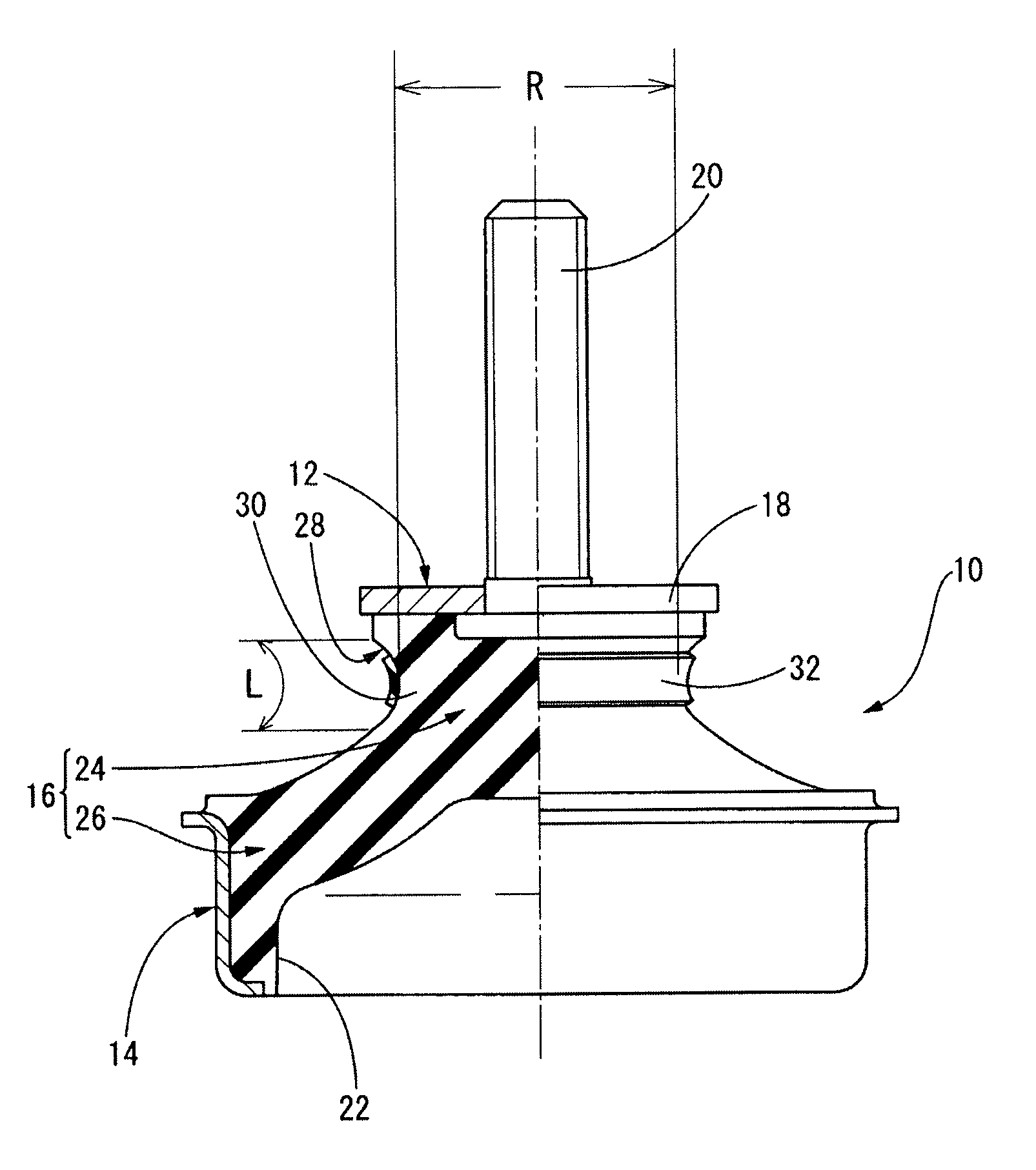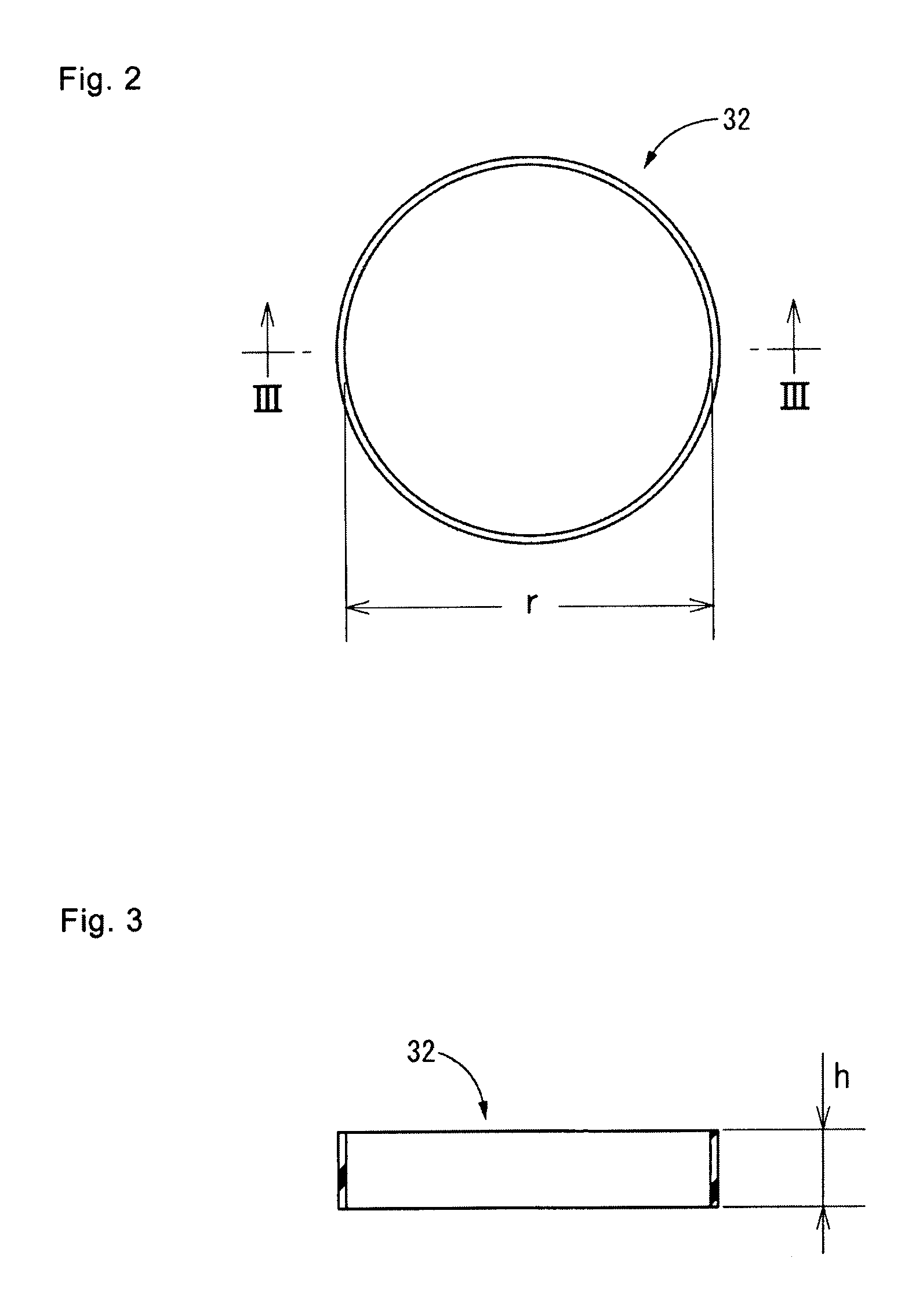Anti-vibration rubber device
a rubber device and anti-vibration technology, applied in the direction of shock absorbers, vibration dampers, non-rotating vibration suppression, etc., can solve the problems of cracks occurring cracks in the constricted portion, so as to achieve sufficient inhibition, prevent or inhibit effectively, and increase the resistance to gas permeability
- Summary
- Abstract
- Description
- Claims
- Application Information
AI Technical Summary
Benefits of technology
Problems solved by technology
Method used
Image
Examples
Embodiment Construction
[0025]In order to clarify the present invention further specifically, a configuration of the present invention is described below with reference to the drawings.
[0026]FIG. 1 is a half view illustrating an engine mount for an automobile, which is an anti-vibration rubber device according to an embodiment of the present invention. As shown in FIG. 1, an engine mount 10 of the present embodiment has a structure in which a first attachment fitting 12 as a first attachment member and a second attachment fitting 14 disposed distant therefrom as a second attachment member are integrally connected by a main rubber portion 16 provided between the first attachment fitting 12 and the second attachment fitting 14. Of the engine mount 10, the first attachment fitting 12 is attached to a power unit and the second attachment fitting 14 to a vehicle body (not shown in the drawing). Thus, the power unit is supported on the vehicle body and is prevented from vibrating in a state where the engine moun...
PUM
 Login to View More
Login to View More Abstract
Description
Claims
Application Information
 Login to View More
Login to View More - R&D
- Intellectual Property
- Life Sciences
- Materials
- Tech Scout
- Unparalleled Data Quality
- Higher Quality Content
- 60% Fewer Hallucinations
Browse by: Latest US Patents, China's latest patents, Technical Efficacy Thesaurus, Application Domain, Technology Topic, Popular Technical Reports.
© 2025 PatSnap. All rights reserved.Legal|Privacy policy|Modern Slavery Act Transparency Statement|Sitemap|About US| Contact US: help@patsnap.com



